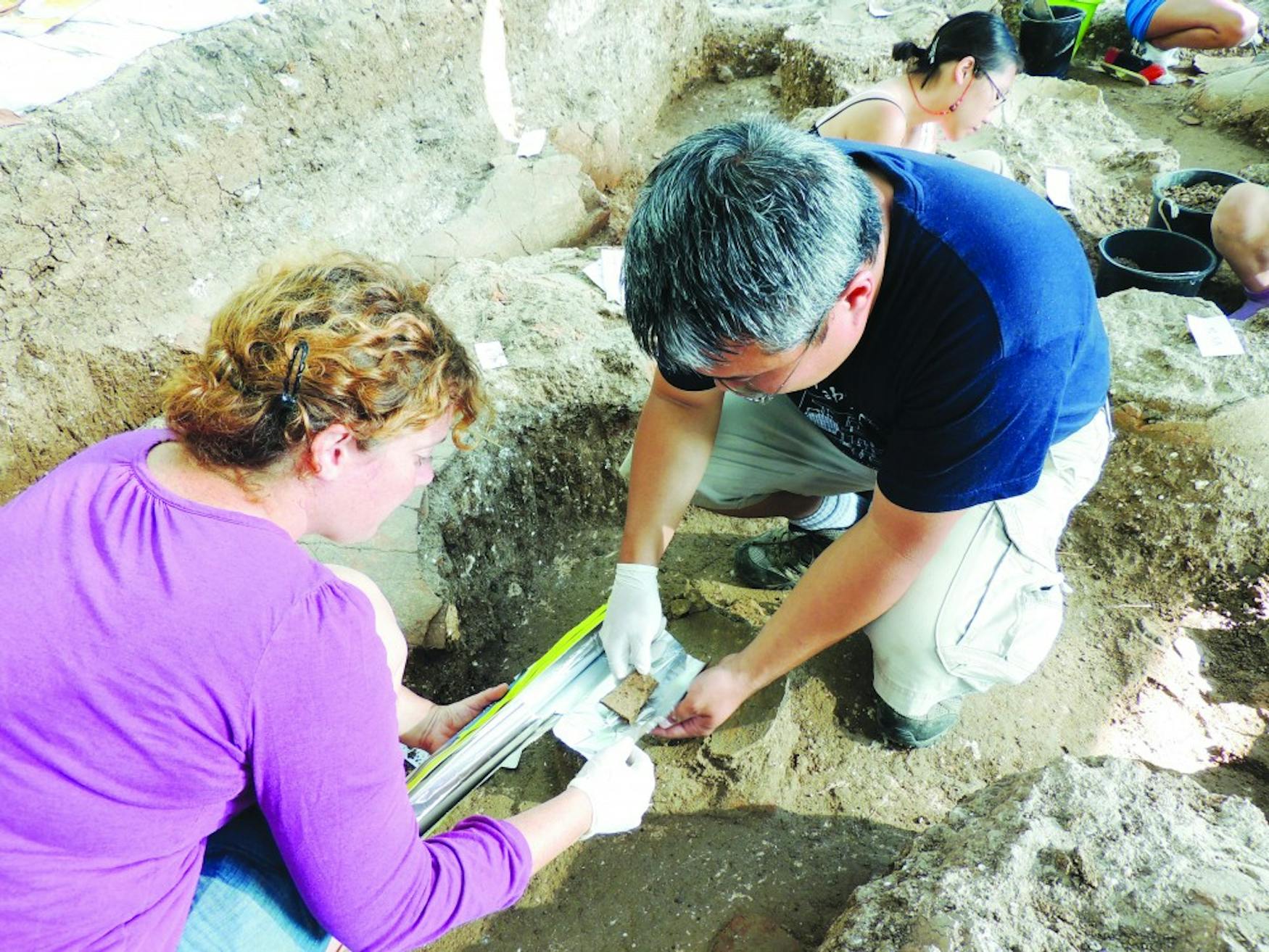Unearthing Canaanite relics
From a young age, Prof. Andrew Koh (CLAS) was enamored with beginnings. Then he grew up and became an archaeologist— a profession that takes him back to the start of the world’s first ancient civilizations every day. At the height of his career, he has managed to marry his diverse areas of expertise, using his dual background in both classical studies and biological chemistry to unearth truths about ancient viticulture and the Canaanite community that might otherwise have remained shrouded in historical guesswork.
Koh and his colleagues discovered the ruins of an ancient wine cellar among the remains of an ancient Canaanite Palace called Tel Kabri in Upper Galilee of modern-day Israel.
Although the site was excavated last year, Koh’s study was only recently published, on Aug. 27 in the journal PLOS ONE with Eric Cline of George Washington University and Assaf Yasur-Landau of the University of Haifa in Israel.
While other parts of the palatial site seem to have been emptied of their contents, it appears that the cellar was left untouched for reasons unknown, leaving 40 wine jars buried beneath the site for centuries. The archaeological marvel is being considered the oldest and largest wine cellar ever discovered.
One look was all Koh needed to make an educated guess about what might have been stored in these jars. The vessel, with its narrow rim and relatively large size, indicated that wine was a likely contender.
Yet it took more complex scientific analysis to learn details that no classically trained archaeologist could have known. Koh’s background in chemistry allowed him to do residue analysis of the jars and determine the presence of tartaric acid, a major acid in wine. What’s more, Koh’s team found syringic acid in most of the jars, which indicated that they once held red wine.
West of the palace’s central courtyard, the archaeologists made a promising find when they dug up the first vessel, which they named “Bessie.” “We didn’t want to get our hopes up because what happens if you get your hopes up is that ends up being the only jar you find,” said Koh.
Yet directly following the ecstasy of finding the jar, Koh and his colleagues made an alarming mental estimate. “We’ve done this long enough ... we did the calculation in our head and said, ‘we’re not going to finish,’” Koh said.
With only five weeks of time remaining, Koh and his team went for a radical strategy. By having the approximately 50 volunteers working at the site switch off on double shifts, they were able to finish on one of their final days in northern Israel.
Koh is among a small pool of archaeologists who have the background to conduct his own scientific research, making for more thorough assessments of excavation sites. In most cases, archaeologists delegate scientific analysis to chemists located in remote labs perhaps hundreds of miles away from the site, about which Koh said, “there’s a disconnect there. It’s a very inefficient transfer of knowledge. Isn’t it sad that that’s how it’s been done for over a century and we haven’t really changed it?”
“We want to learn about the big picture of the palace that we couldn’t have done without these techniques,” said Koh.
With Koh’s latest discovery, he hopes that the benefits of archeologists who can conduct their own scientific analyses will be obvious.
Although Koh conducted much of his own scientific research, he collaborated with professors from the Brandeis Chemistry department, including Profs. Barry Snider, Casey Wade and Christine Thomas.
Going forward, Koh hopes to use grape DNA from Kabri to reconstruct what actual seventh century vineyards were composed of by conducting Geographic Information Systems and landscape studies at the new Brandeis Digital Humanities Lab to isolate feral grapes near Kabri that might descend from the times of the ancient Canaanites.
Growing up, Koh never imagined that he would become an archaeologist. His parents wanted him to become a doctor, so he studied biological chemistry at the University of Illinois for his undergraduate degree. However, Advanced Placement credits gave him flexibility in his course schedule. He was also able to take the classics classes about which he was passionate.
In 1999, he matriculated into the University of Pennsylvania, where he received his doctorate in 2006. With a unique grounding in classical material as well as years of experience in the laboratory, his advisors encouraged him to write a dissertation that drew upon scientific analysis. Koh was wary of the suggestion. He didn’t want to be the “oddball” among his peers, having imagined himself following in the footsteps of traditional archaeologists like personal heroes James Pritchard and Sir Arthur Evans.
He knew that his unconventional approach might make him a stand-out candidate among his peers, but it could just as easily destroy his hopes of finding a home in academia. “My mantra the whole time was ‘we’ll see how it works out,’” said Koh.
After flirting with numerous institutions, including the University of California, Los Angeles and Dartmouth College, Koh became an assistant professor in Brandeis’ department of Classic Studies in 2011. “Brandeis is so much about relationships so I fit right in,” Koh said.
Since becoming a professor here, Koh has organized multiple archaeological digs for his students that include Classical Studies undergraduates as well as students from a wide spectrum of majors.
About his archaeological excavation research trips generally, Koh said “I’m not going there ... primarily just to do residue analyses. I’m there to do archaeology. I didn’t get into this just to do lab work. I would be making money if it was just to do labwork, but that’s not enough fun.”




Please note All comments are eligible for publication in The Justice.